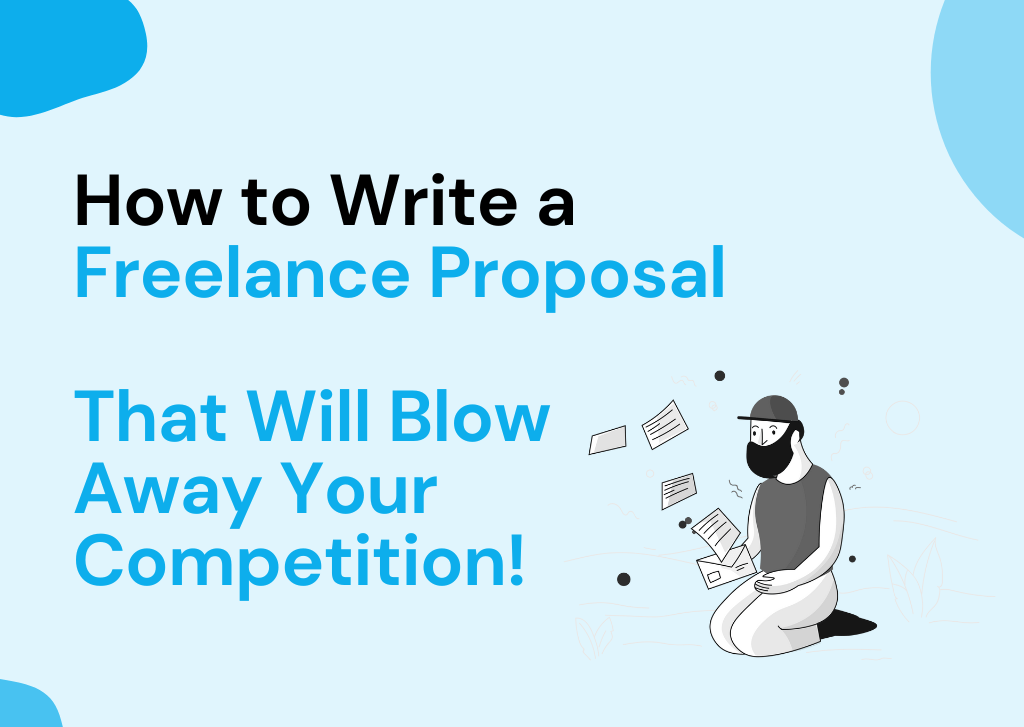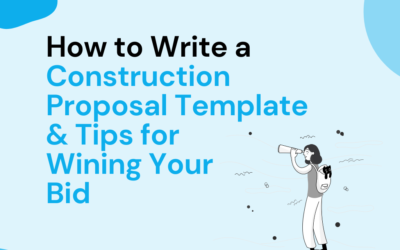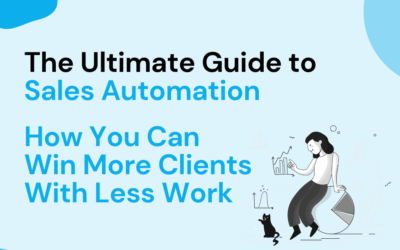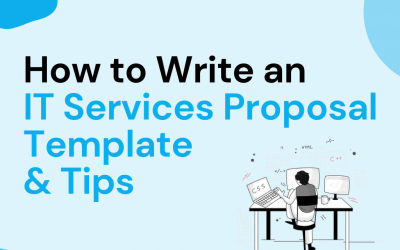An excellent freelance proposal can make or break your relationship with your next client. Freelance proposals are the bridge between you and your client and decide whether you’ll be working together. This means that perfecting your freelance proposals is a must! And having a framework for doing so should be a part of your skillset as a freelancer.
As freelancers, one of the most common problems is the inconsistency of orders from clients. One of the best ways to combat this is to increase the effectiveness of your freelance proposals.
An excellent freelance proposal makes the client feel safe, secure, excited and prioritized. Without a superb freelance proposal, it makes the client feel like a stranger and not valued since you are not acknowledging their needs.
In this article guide, you will learn one of the best ways to increase your conversion rates, and that’s by learning how to write a freelance proposal.

How to Write a Freelance Proposal
1. Identify Keywords
If you are applying for an open job, it most likely has a job description. This is a great place to look for actionable keywords: Written, managed, created, composed, effectively, successfully, ensured, etc.
You want to include these keywords in your freelance proposal since open jobs usually have numerous proposals being sent to employers, AI’s are most likely used to help filter out bad proposals.
Using actionable keywords enables you to stand out from employers’ numerous proposals since AIs are searching for these keywords. These keywords are usually verbs, or in other words, they are actions you take.
Below is an example of a bullet point from a job description; the keywords are underlined for your reference.
Job Description:
- Supervise and manage finance department staff, including setting attainable goals, developing protocols, and providing guidance to subordinates.

2. What’s In It For Them?
As a client, you are most interested in the things that will benefit you. Therefore, as a freelancer, you should be including points on why your services will help them.
You can do this by outlining your skills, strengths, processes, protocols, techniques, a detailed plan of action, a timeline, etc. Always go above and beyond in this principle.
Always strive to use phrases such as “for you,” “for your business”, “for your article”, instead of “I can”, and “I will”.
The more you talk about them and only them, your freelance proposal becomes better. Because a freelance proposal at its core is about the client and not the freelancer, it’s about why the client should be choosing you and vice-versa.
3. Create a Freelance Proposal Template
In any aspect of life, it’s always good to have systems to guide you on how to do things efficiently.
This also applies to writing freelance proposals; it’s always good to create templates for your future clients. However, in the process of creating the template, most freelancers get lost.
The following is a brief breakdown of what you should have in your freelance proposal template and a description of each section.
Executive Summary – should give a broad summary of the freelance proposal. It should include a brief description of the problem or objective being addressed, the recommended techniques, how they will accomplish the intended result, and a budget and timetable estimate. This is also the last section of your proposal, so make it worthwhile reading!
Problem or Goal Explanation – should implement the “What’s In It For Them?” mentality. Be mindful of each word you choose and make the client feel valued and acknowledge their problems. Then, set attainable goals that run counter to the acknowledged problems your client is facing. Ex: Problem: Lack of website traffic | Goal: Reach 5K+ website traffic every month.
Strategy – should include the strategy that you will implement to resolve the acknowledge problems while reaching your target goals. This is the core of your freelance proposal. It is the “how” and the section where you can showoff your superb technique/processes for attaining such goals.
Budget – The budget part should include both a predicted cost for the entirety of your deliverables as well as a breakdown of the costs for each component of your deliverable separately. It’s vital to remember that you should always ask for your client’s budget first so that you can design a proposal that fits their needs. The budget section is where you should be explaining why you are charging your client a certain amount. Make sure to explain each component of your price.
Timeline – The timeline is where you should include an expected turnaround/deadline for your deliverables. Ideally, this should be discussed and set before writing your freelance proposal so there are no confusion down the road between you and your client. If your work contains multiple processes to complete your deliverable, make sure to include a timeline for that aswell. It should also include specific tasks, and the timelines for accomplishing those tasks, and any key project milestones should all be included. Ex: Research – 1-3 days, Writing – 1-2 days, Proofreading – 1 day, Expected turnaround – 6 days.
Deliverables – Deliverables are the product or service you are delivering. This can be an article, video, audio, etc. This depends on what product or service you are offering. However, the process is the same for all freelancers which is to make sure that you are clear on what is being delivered. If not, you will get unsatisfied customers and most likely negative reviews. This can be a big hit to your credibility especially if you are using websites such as Fiverr and Upwork where profile statistics are extremely important for your impression count.
Implementation – should include how you are going to implement your strategy to resolve the client’s problems and reach their goals. Implementation can have its own section or be combined with the strategy or timeline section.
Resource Requirements – should include resources that you will need from the client. If you are a content writer, these would be an article structure, title, keywords, etc. If you are a digital marketer, these would be target audience, goals, etc.
Appendix – Any other relevant material not included in the proposal might be included in the Appendix section. Case studies, past work samples, or customer letters of recommendation may be included.
Need Help?
Too many proposal software options? Not enough time? Let us help!

4. Research Your Client
Statistics tell us that it’s much easier to sell to a friend than to a stranger. Therefore, you should be performing your research about your client.
Take notes on how they talk, what they do, etc. The more you know about the client, the more comfortable you’ll be writing a freelance proposal tailored for them.
No matter what product/service you’re providing, your freelance proposal should always reflect and be tailored to your client. And the best way to do this is to know your client. Here are some points you should be looking for:
- Who are they?
- What’s their brand?
- How do you fit their brand?
- What are their core values?
- Who are their main competitors and how can you help them compete?
5. About Me / Credentials
This section is highly optional and can be excluded if you’d like. However, if you do want more personality, this section can an excellent section while writing your freelance proposal.
Especially if the business you’re proposing is somewhat informal such as the pet industry, entertainment, etc. It’s up to you to decide whether an about me section is appropriate.
While the proposal, price, and executive summary parts must be technical and precise, here is the portion where you may speak directly to the client.
Focus on what sets you apart and how you see a link between yourself and the client’s project. Don’t be scared to crack a few jokes. Tell them why you’re the best person for the job and why you’re the best person to address the client’s problem.
However, be careful of who you’re speaking with and avoid becoming excessively nice if your reader is overly formal.
Below is an example of how you can start your About Me section
In 2017, I decided to leave my job and pursue a freelancing career because there’s something about being your own boss and seeing new businesses grow that excites me.
I still feel this was the finest move I ever made four years later. I’ve worked with clients from all over the world, become friends with them, and even traveled to their countries to see some of my foreign clients. Most significantly, I gained a strong enthusiasm for my profession and believe that my writing services genuinely make a difference.
Working on this project would allow me to broaden my horizons and get experience in the […]
6. Add Social Proof / Testimonials
Recommendations and reviews are an excellent approach to demonstrate to potential clients that you are competent in your field.
There’s a reason why business networks like LinkedIn, Upwork, Fiverr, and others have entire sections dedicated to ratings/reviews. Clients trust the suggestions of other clients, same as internet shoppers who consult their friends and read online reviews before making a purchase.
To show your client that you already have a long history of finished and successful projects, including direct customer quotations or even videos in your proposal.

7. Review Your Proposal Before Submitting It
Even though this may seem obvious, it’s essential to review your freelance proposals before submitting them. The following is a list of things you should look out for.
- Grammar, spelling, and capitalization.
- Sentence structure (conciseness or dragged-on sentences)
- Layout and design
- Fact-checking – names, dates, figures, statistics, links, etc.
- Tone
- Make sure each section is fulfilling its purpose.
Conclusion
In conclusion, you now know how to write your freelance proposals and create a template that you can use for future clients.
Implementing the mentioned tips above will increase your chances of converting clients and job postings, which is the biggest hurdle for a freelancer. Good luck!





